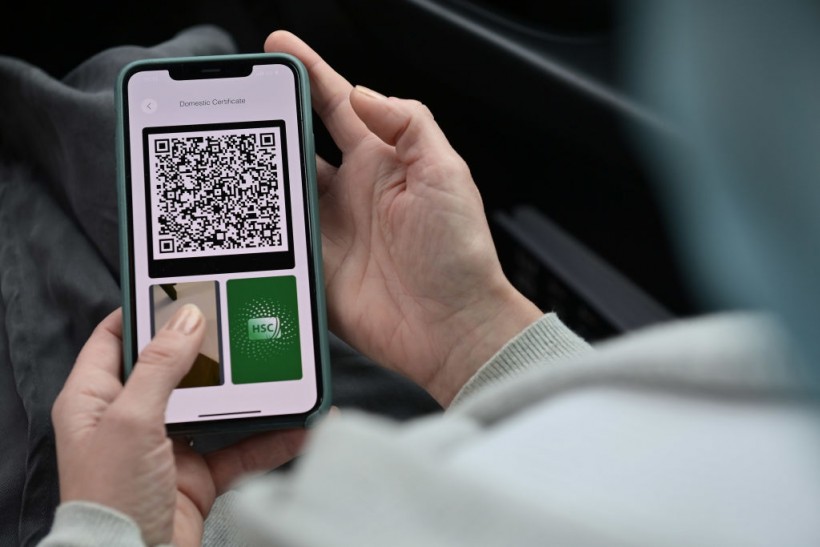A new AI (artificial intelligence) model could detect COVID-19 through someone's voice via a mobile phone app, according to a recent study that will be presented on Monday at the European Respiratory Society International Congress in Barcelona, Spain.
According to a report by News Medical, the AI model employed in this study is cheaper, quicker, and easier to use than lateral flow/rapid antigen testing, making it suitable for application in low-income nations where PCR tests are expensive or challenging to distribute.

(Photo : Charles McQuillan/Getty Images)
BELFAST, NORTHERN IRELAND - NOVEMBER 29: A member of the public is seen with their Covid passport on their smartphone via the COVIDCert NI app on November 29, 2021 in Belfast, Northern Ireland.
89% Accurate
The accuracy of lateral flow testing varies greatly depending on the brand, but the AI model was accurate 89% of the time, according to Wafaa Aljbawi, a researcher at the Institute of Data Science at Maastricht University in the Netherlands.
She added that lateral flow tests had a significantly lower ability to identify COVID-19 infection in those with no symptoms.
These encouraging results indicate the possibility for basic voice recordings and customized AI algorithms to achieve high precision in identifying patients with COVID-19 infection. Such tests can be delivered at no cost and are easy to interpret, according to Aljbawi.
The upper respiratory tract and vocal cords are typically impacted by COVID-19, altering a person's voice. Dr. Visara Urovi, also from the Institute of Data Science, and Dr. Sami Simons, a pulmonologist at Maastricht University Medical Centre tested the viability of using AI to analyze voices to identify COVID-19.
The team used information from the crowdsourced COVID-19 Sounds App from the University of Cambridge, which includes 893 audio samples from 4,352 healthy and unhealthy subjects, of which 308 received COVID-19 positive test results.
How the App Works
Users download the app to their smartphones, provide some basic demographic, medical, and smoking status information, and are then required to record respiratory sounds.
Coughing three times, taking three to five deep breaths through their mouths, and reading a brief sentence on the screen three times are a few of the steps that users must do to get tested.
The researchers employed a method for analyzing voice known as Mel-spectrogram analysis, which distinguishes several voice characteristics like volume, power, and fluctuation over time.
Long-Short Term Memory (LSTM) was one of the models that they discovered performed better than the others. Neural networks, on which LSTM is based, imitate how the human brain functions and identify the underlying links in data.
Given that it can keep information in its memory and that it works with sequences, it is appropriate for simulating signals that have been gathered over time, such as speech sounds, according to News Medical.
It had an overall accuracy rate of 89%, a true positive rate or "sensitivity" of 89%, a true negative rate or "specificity" of 83%, and an accuracy rate for correctly detecting positive cases of 89%.
Further Validation of Findings
The researchers said that substantial numbers must be used to validate their findings. 53,449 audio samples from 36,116 individuals have been collected since the experiment began and can be used to enhance and validate the model's accuracy.
They are also conducting additional research to determine which aspects of the speech are influencing the AI model.
Related Article: University of Michigan's Professor Creates A Crime-Predicting AI That He Claims Has 80-90% Accuracy
This article is owned by Tech Times
Written by Joaquin Victor Tacla









